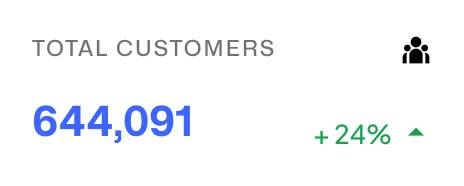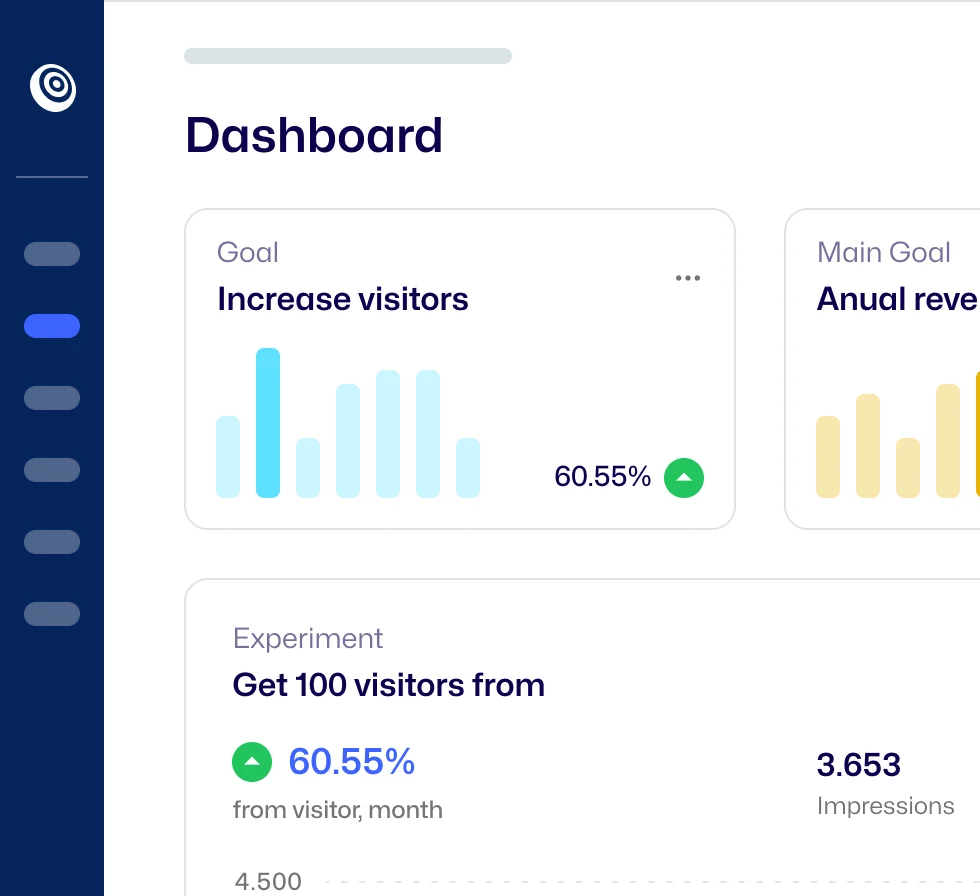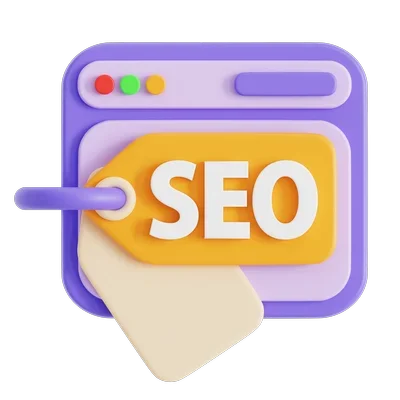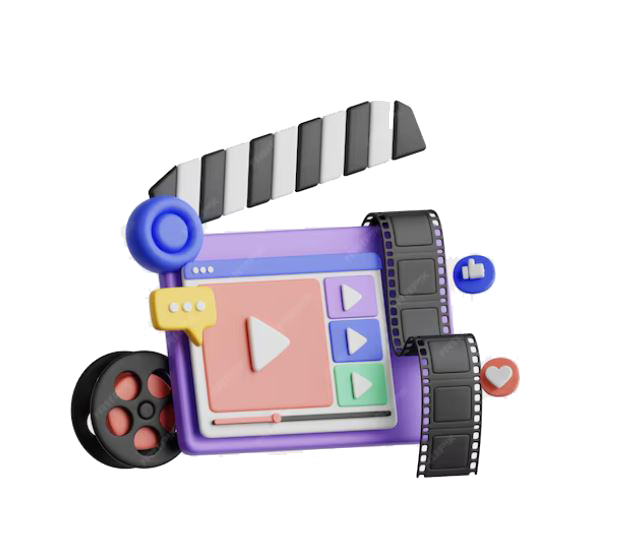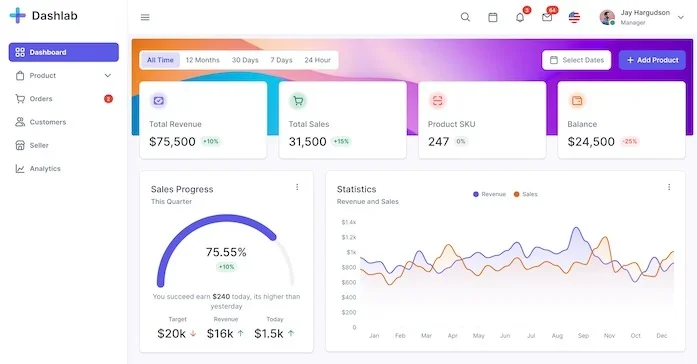
Alright, so the original link for this gig was a total bust.1 Happens. But hey, we got other intel, and honestly, the real stuff comes from the trenches, not always some polished blog post. This ain’t gonna be some fluffy motivational poster stuff, it’s the real talk about getting Google Ads to actually work. We’re talking about making money, not just impressions, right?
Yo, What’s the Deal with Google Ads Anyway?
So, you’re here because you know Google Ads is like, the wild west of digital marketing. Everyone’s bidding for attention, and if your ad copy sucks, you’re just throwing money into the void. It’s not just about showing up; it’s about showing up right and making people click.
This stuff matters, like, really. It’s about capturing existing intent. People are searching for something, they’re not just browsing. Your ad needs to be the answer to their query, pronto. If it’s not, they’re gone. Like, next tab, next ad.2 This direct connection to user intent means that the ad isn’t just an advertisement; it’s a response to a specific, expressed need. If the ad doesn’t immediately signal that it understands and addresses that need, the user will simply move on to the next search result.
It directly impacts your Quality Score, which is Google’s secret sauce for how much you pay and how often you show up. Good copy means a better Quality Score, which means lower Cost Per Clicks (CPCs) and higher ad rank. It’s a flywheel, you know?.2 The way this works is pretty neat: Google’s Ad Rank, which determines where your ad appears, isn’t just about how much you bid. It’s also heavily influenced by your Quality Score.2 That Quality Score gets a big boost when your ad copy is super relevant to the keywords people are searching for and when your landing page delivers on what your ad promises.2 When your Quality Score climbs, your CPC often drops, and your ad position improves.3 This means you end up getting more clicks for less cash, and that better performance data then helps you fine-tune things even more. It’s a pretty sweet cycle. What this all boils down to is that being relevant isn’t just some best practice; it’s a core economic driver within the Google Ads system. You’re basically getting rewarded for making Google’s job easier – connecting users to exactly what they’re looking for.
The basic parts of an ad, the headlines, descriptions, URLs, the whole shebang, each play a role. Your Headline is your big shot, literally the first thing people see. You get a few of ’em, so make ’em count. Gotta include words people searched for.5 The Display URL isn’t just a web address; it’s another signal. Make it relevant to the search, like /women/nike for “womens nike shoes.” It tells people, “Yep, you’re in the right place,” before they even click.5 The Description is where you get into the deets, explain your offer, your Unique Selling Proposition (USP). You’ve got more room here, so use it to convince.2 And then there are Assets (they used to call ’em ad extensions). Use these like wild. They give you more real estate, more info, more reasons to click.3
Crafting Copy That Doesn’t Suck (and Actually Converts)
This is where the rubber meets the road. It’s not about being clever; it’s about being effective.
Headlines: Making ’em pop and grab attention
Keywords are King (or Queen, whatever). Seriously, put the searcher’s keywords in your headlines. It’s like calling out their coffee order – “This is your caffè Americano!”.5 It tells ’em, “We have what you’re looking for”.5 You see, while using keywords in headlines is crucial for relevance and boosting your Quality Score 2, it’s not just about a literal word-for-word match. It’s about reflecting the user’s underlying intention. If someone types “luxury mattresses,” your ad shouldn’t just say “mattresses.” It should say “luxury mattresses”.5 This immediately communicates the price point, the quality, and directly answers the unspoken need behind their search. The implication here is that effective ad copy isn’t just about keyword density; it’s about understanding the subtext of the search query and reflecting that understanding back to the user. This builds immediate trust and relevance, showing the user that you truly get what they’re after. It’s about empathy in copy, really.
But don’t just stuff ’em. Keyword saturation is a dumb idea. It looks spammy and Google hates it. Articulate what you’re selling, don’t just list words.5 Placement matters too. Test where your keywords hit hardest. First headline? Second? You won’t know ’til you test.5 Throw your brand name in there sometimes too. Good for awareness, makes you look legit.2 Keep it concise and punchy. One or two sentences often work best. People make snap judgments. Put a clear benefit right in the headline.3
Descriptions: Where you spill the beans, but keep it tight
This is where you detail your offer, elaborating on the product or service. What are you selling? Why should they click?.2 Your Unique Selling Propositions (USPs) are crucial here. What makes you different? Fast delivery? Custom options? Warranties? Shout ’em out. This is your secret sauce.2 Even with character limits, break up thoughts with periods to convey multiple USPs or core selling benefits. Makes it easier to scan, which is how most people read ads anyway.2 Be insanely direct. This isn’t Instagram. You’re capturing existing intent, not building it. Get to the point. What you offer, why you’re better.2 Focus on key benefits instead of just listing features. Think “more restful sleep” for mattresses, not just “memory foam”.5 And for the love of all that’s holy, avoid filler words like “very” or “really.” Ditch ’em. They add nothing.5
CTAs: The “do this now” part that’s kinda crucial
You need a clear Call to Action. “Shop now,” “Get a Free Demo,” “Learn More.” Simple, action-oriented. This is the whole point, right?.3 A CTA isn’t just a command; it’s a signal of commitment. “Shop now” implies a user is ready to buy, “Get a Free Demo” suggests a lead generation goal, and “Learn More” points to a user in the research phase. The right CTA, when it aligns perfectly with what the user is searching for and what your business wants to achieve, acts like a filter.3 It helps qualify clicks before they even land on your page. If someone clicks “Shop Now” but they’re just doing research, they’ll bounce, and that’s just money down the drain. If your ad and CTA accurately set expectations, you end up with higher quality clicks, which then boosts your conversion rates and, ultimately, your return on investment. This means the CTA isn’t just about getting a click, it’s about getting the right click.
Keywords: Not just stuffing ’em in, but making ’em sing
Your ad copy must match search intent. If it doesn’t, it’s ineffective, even if you’re using your target keywords.2 Dynamic Keyword Insertion (DKI) is cool tech. It drops the actual search term into your ad automatically. Just make sure you have a good default text if a keyword doesn’t fit.2 Also, group like-keywords together based on pain points or value propositions. Then write ad copy specific to those groups. This really improves your Click-Through Rate (CTR).2 Grouping similar keywords and then crafting highly specific ad copy for each of those groups 2 goes way beyond just including keywords. It creates a hyper-relevant ad experience for the user. This level of precision tells Google that your ad is exactly what the user needs, which gives your Quality Score a significant boost.2 And a higher Quality Score means lower CPCs and better ad positions.3 The takeaway here is that a granular ad group structure and tailored copy aren’t just about being organized; they’re direct levers for maximizing ad efficiency and minimizing wasted spend by appealing to specific, nuanced user intentions. It’s about surgical strikes, not carpet bombing.
USPs & Social Proof: Why you’re better, and why people should beleive you
Seriously, what makes you special? Fast delivery? Custom? Handmade? Explain why they should choose you over the other guys. These are your Unique Selling Propositions.2 People trust other people. Awards, 5-star reviews, how long you’ve been around. Sprinkle that stuff in. It builds trust, makes you seem legit.2 You can also use power words to trigger emotions. Think “transform,” “unleash,” “discover”.5
Here’s a quick look at what works and what’s just a dumb idea:
Table 1: Ad Copy Elements: What Works & What Doesn’t
|
Element |
What Works (Example) |
What Doesn’t (Example) |
Chaotic Commentary |
|
Headline |
“Luxury Mattresses – Shop Now” 5 |
“Mattresses For Sale Here” |
Super direct, hits intent. The other one? Generic AF. |
|
Headline |
“Get a Free Demo – B2B Software” 3 |
“Our Software Is Great!” |
Clear benefit, clear action. The second one is just… fluff. |
|
Description |
“Award-Winning Service. 5-Star Reviews. Fast Delivery!” 2 |
“We sell stuff. Good stuff. Buy it now.” |
Social proof, USPs, scannable. The other is just sad. |
|
Description |
“Solve Your Pain Points. Save Time & Money Today.” 3 |
“Our product has features A, B, and C.” |
Focus on their problem, not your specs. Benefits, always benefits. |
|
CTA |
“Shop Now” / “Try Free” / “Learn More” 3 |
“Click Here” / “Go” |
Specific action, sets expectation. “Click Here” is so 2005. |
The Landing Page Link-Up: Don’t Screw This Up
Okay, so you got the click. Congrats. But if your landing page sucks, that click was a waste of money. It’s like inviting someone to a party and then locking the door.
Your landing page needs to be besties with your ad copy. This is non-negotiable. If your ad promises “Start Your Free Trial,” the landing page better have a big “Start Your Free Trial” button and headline. Mismatched offers annoy users and Google. Seriously, Google will suspend your campaigns if it’s bad enough.2 The ad copy’s entire job is to generate a click by making a promise of relevance.5 The landing page’s job, on the other hand, is to fulfill that promise and actually convert the user.3 If there’s any kind of disconnect, even a small one, the user is just going to bounce 3, and that click you paid for? Totally wasted ad spend.4 This means the landing page isn’t just some destination; it’s the absolute critical bottleneck in your entire conversion funnel. You could have the most perfectly crafted ad, but if it leads to a terrible landing page, it’s like having a Ferrari with no engine. The big picture here is that your ad strategy must be holistic, extending beyond just the ad itself to the entire user journey. The landing page is just as important, if not more important, than the ad copy for actually seeing a return on your investment.
Google looks at your landing page experience as part of its Quality Score. Slow load times, messy design, or irrelevant content will tank your Quality Score, driving up your CPC.4
Here are some quick tips for a page that doesn’t make people bounce: Keep it clean and fast. Compress images, use concise copy. Your Call to Action should be above the fold so users can see it instantly. No one waits for slow pages.3 Highlight a single goal. Don’t confuse people with multiple CTAs or mixed messages. Each landing page should have one primary objective, like collecting email leads or scheduling a demo.3 And it’s 2024, people are on their phones. Your page has to be mobile-friendly, responsive, and fast on mobile.4
Testing & Optimizing: Because You’re Not a Mind Reader
You think you know what works? Lol. Nope. You gotta test. Always. This ain’t a one-and-done thing, it’s a continuous grind.
Why A/B testing is your BFF? Running a single ad version is just dumb. It limits your ability to learn what works.4 A/B test headlines, descriptions, CTAs. Find the winners.4 Even small tweaks matter. A single-word change, like “Boost ROI” vs. “Increase ROI,” can make a huge difference in your click-through rates.3 Use Google’s ad rotation features. Let Google show different versions to different audiences and gather data over time.4 The digital landscape is always shifting, right? Competitors are constantly optimizing their own ads, user behavior changes, and Google’s algorithms are evolving all the time.3 If you’re not continuously testing and optimizing your campaigns, you’re not just standing still, you’re actually falling behind. A/B testing 3 isn’t just about making your own performance better; it’s about keeping a competitive edge. The big point here is that static ad campaigns are effectively dying campaigns. That whole “set it and forget it” mentality? That’s a recipe for just pouring money down the drain. This whole environment demands a culture of continuous experimentation and adaptation within any agency or marketing team.
What metrics to actually care about (hint: it’s not just CTR). Focus on conversion rates. CTR is cool, but conversions are what pay the bills. Are people actually doing what you want them to do?.4 Many advertisers get totally hung up on Click-Through Rate.4 And sure, CTR tells you if your ad caught someone’s eye, but it doesn’t tell you if those clicks are actually valuable. Focusing only on CTR is a trap, a “vanity metric” trap.5 The real measure of success is your conversion rate and your Cost Per Acquisition (CPA).3 This means that if you’re optimizing for clicks but not for actual conversions, you’re fundamentally misunderstanding the whole point of paid advertising. It’s not about getting traffic; it’s about getting revenue. This requires a complete shift in mindset from “how many people saw or clicked” to “how many people converted and how much did it cost to get them?”
Run tests long enough. Don’t pull the plug too early. You need meaningful data, not just a gut feeling.5 And tweak one element at a time. Change too many things, and you won’t know what actually made the difference.5
The daily, weekly, monthly checks – the grind is real.
- Daily: Do a quick scan for any sudden weirdness or disapprovals. Did your CTR nosedive for a certain keyword? Is an ad extension rejected? Quick fixes at this stage prevent small issues from spiraling into costly problems.3
- Weekly: Review your negative keywords, bids, and basic campaign metrics. This is also a good time to check your Google Ads Optimization Score and see if there are any easy suggestions worth testing—like refining an ad’s headline or adjusting a bid by a few cents.3
- Monthly: Take a deeper dive into conversions and Cost Per Acquisition (CPA). Evaluate whether your campaigns are hitting your broader goals. If not, consider revising your landing pages, exploring new keyword opportunities, or shifting budget toward top performers.3 This daily, weekly, monthly optimization routine 3 isn’t just about making things better; it’s about preventing catastrophic budget waste. Catching a sudden nosedive in CTR or an irrelevant keyword early on 3 can save you a ton of money that would otherwise just get drained. This proactive approach turns optimization from a reactive fix into a continuous mechanism for preventing costs. The point is that consistent, structured review is a crucial part of managing your finances in Google Ads, not just a performance tweak.
Dumb Mistakes to Avoid (Seriously, Don’t Do These)
Look, everyone screws up. But some mistakes are just… basic. Don’t be basic.
Keyword blunders (wrong types, ignoring negative keywords)
Relying too much on broad match keywords is a budget killer. It brings in irrelevant traffic and reduces lead quality. Use a mix: exact, phrase, and broad match modified.4 Ignoring negative keywords is so simple, yet so many skip it. Without them, your ads will show for irrelevant searches, driving up costs and killing your CTR and conversion rates. Build that negative keyword list!.4 Not all high-volume keywords are worth it. Some are too broad, too competitive, or just don’t have commercial intent. Focus on what matches your business goals.4 The common keyword mistakes – using the wrong match types, ignoring negative keywords, bidding on irrelevant terms 4 – all lead to one thing: wasted ad spend. These aren’t just minor inefficiencies; they’re direct leaks in your budget. By meticulously managing your keywords, especially your negative ones, you’re not just making your ads more relevant; you’re actively protecting your budget from being squandered on unqualified traffic. The big picture here is that a robust keyword strategy is a defensive measure, not just an offensive one, and it’s absolutely crucial for the financial health of your Google Ads campaigns.
Campaign structure chaos
If your campaigns are a hot mess, with ad groups all over the place, you’ll get irrelevant placements, weak Quality Scores, and yeah, wasted budget.4 To fix this, divide your campaigns by theme, product, or service line. Keep ad groups tightly focused around related keywords.4
Skipping conversion tracking (lol, why?)
If you don’t track conversions, you literally have no idea what’s working. You’re just guessing.4 This is like driving blindfolded. You can’t optimize what you don’t measure. Without knowing which ads, which keywords, or even which landing pages are actually driving leads or sales, every decision you make is a shot in the dark. This leads to incredibly inefficient budget allocation and completely missed opportunities. The implication is that conversion tracking isn’t just some technical setup; it’s the fundamental prerequisite for any intelligent business decision-making in Google Ads. Without it, you’re not running a campaign; you’re just spending money. Set it up Day 1. Google Tag Manager, Google Ads conversion tracking. Track form submissions, calls, high-value actions.4
Ignoring mobile users (it’s 2024, c’mon)
Mobile accounts for a massive chunk of ad traffic. If your ads and landing pages aren’t optimized for mobile users, you’re missing out on a huge opportunity.4 Use mobile-preferred formats where appropriate, and your landing pages must be responsive and fast-loading.4
Not testing enough variations
Running a single version of your ad limits your ability to learn what works. You’re leaving money on the table because you won’t learn what truly resonates with your audience.4 A/B test everything: headlines, descriptions, CTAs. Find what works best.4
Using too many automated recommendations
Google’s optimization suggestions can be helpful, but they’re not always perfect for your specific campaign. Applying recommendations without context can reduce your control and distort your targeting.4 The automated recommendations Google offers are designed for scale and general improvement.4 But if you just blindly apply them without thinking, you could end up with targeting that’s all wrong or lose control over your campaign.4 What this means is that while automation can be a super powerful tool for efficiency, it should never, ever replace human strategic oversight and critical thinking. The human element is still absolutely crucial for understanding the nuanced objectives of a campaign and the specific market conditions that algorithms might just miss. It’s about leveraging automation, not letting it dictate your entire strategy. Review each suggestion against your campaign objectives and only apply changes that align with your goals.4
Here’s a breakdown of common screw-ups and what they actually do to your campaigns:
Table 2: Common Google Ads Mistakes & Their Ripple Effects
|
Mistake |
Direct Consequence |
Ripple Effect/Broader Implication |
|
Using Wrong Keyword Match Types 4 |
Irrelevant traffic, Wasted budget 4 |
Higher CPCs, Lower Quality Score, Reduced ROI 4 |
|
Ignoring Negative Keywords 4 |
Ads appear in irrelevant searches, Increased costs 4 |
Reduced CTR & conversion rates, Wasted ad spend 4 |
|
Poor Campaign Structure 4 |
Irrelevant ad placements, Weak Quality Scores 4 |
Wasted budget, Difficult reporting, Inefficient performance 4 |
|
Skipping Conversion Tracking 4 |
Impossible to measure success accurately 4 |
Blind optimization, Inefficient budget allocation, Missed opportunities 4 |
|
Neglecting Landing Page Quality 4 |
Poor user experience, Unclear messaging 4 |
Harmed Quality Score, Higher CPC, Lower conversion rate 4 |
|
Failing to Test Ad Variations 4 |
Limits learning what works 4 |
Suboptimal messaging, Missed performance gains, Stagnant campaigns 4 |
Wrapping It Up: Keep It Real, Keep It Going
Look, writing effective Google Ads isn’t some magic trick. It’s a blend of understanding your audience, knowing your product, being direct, and then relentlessly testing and optimizing. It’s not about being perfect from day one; it’s about being consistently better. The digital landscape moves fast, so your campaigns gotta move faster. Stay relevant, stay consistent, and never stop learning. That’s the real secret sauce.
Ready to Transform Your Brand?
Partner with Supreme Ideas and experience creative excellence like never before. From concept to execution, we keep you in the loop every step of the way.
✅ Real-time project tracking
✅ Personalized dashboard access
✅ Full transparency & collaboration
Let’s build something extraordinary — together.
